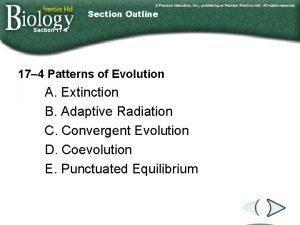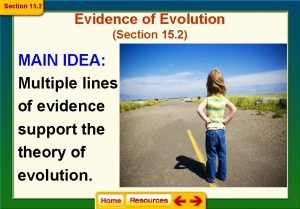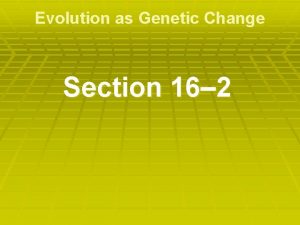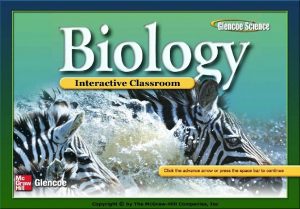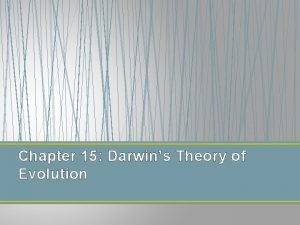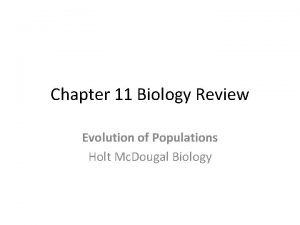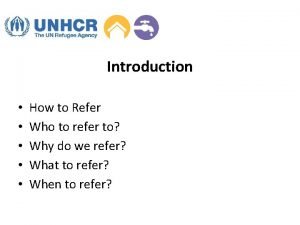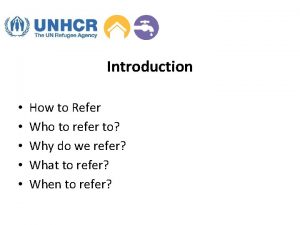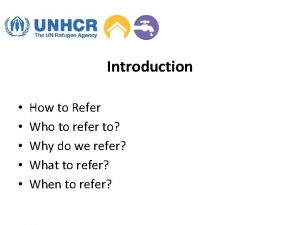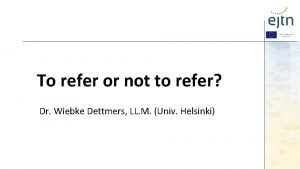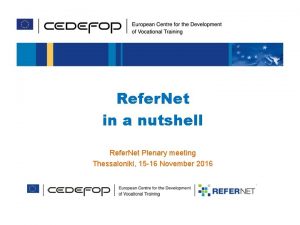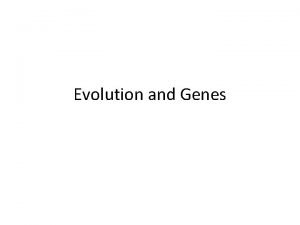Introduction to Evolution Refer to Section 17 1











- Slides: 11

Introduction to Evolution ü Refer to Section 17. 1 (pages 483 -485) ü Review vocabulary on PEHSBiology Quizlet

What is evolution? • Evolution: any change in the relative frequency of alleles in the gene pool of a population over time. • Remember: • Natural selection affects individuals • BUT Populations of individuals evolve

Definitions to know • Allele: different forms of genes • gene pool: all of the genes, including the different alleles that occur in a population. • relative frequency: the number of times a particular allele occurs in a gene pool, compared with the number of times other alleles for the same gene occur. • Population: a group of organisms of the same species

Gene Pool Illustration Example: this diagram shows the gene pool for fur color in a population of mice. Remember… - Genotype: the genetic makeup - Phenotype: the physical characteristics

Natural Selection: the mechanism of evolution Natural selection: organisms with variations most suited to their local environment survive and leave more offspring. In natural selection, the environment—not a farmer or environment animal breeder—influences fitness. *Natural selection on acts on HERITABLE traits!

Natural selection occurs in situations where: 1. more individuals are born than can survive (the struggle for existence), 2. there is natural heritable variation (variation and adaptation), and 3. there is variable fitness among individuals (survival of the fittest).

1. The Struggle for Existence • If more individuals are born than can survive, members of a population compete to get: • Food • Places to live • Places to put waste. • Competition increases when resources are limited.

2. Variation and Adaptation • Individuals have natural variations in their heritable (able to be passed on to the next generation) traits • 2 Main sources of genetic variation (the raw material for evolution) 1. Mutations: changes in genes (bacteria mutate often & quickly) 2. Genetic recombination during sexual reproduction • ADAPTATION: a variation that helps an organism survive and reproduce in its environment

Examples of Adaptations

3. Survival of the Fittest • Fitness: how well an organism can survive and reproduce in its environment. • High fitness = they survive and reproduce. • Low fitness = will either die or not reproduce • Survival: reproducing and passing adaptations on to the next generation.

Natural Selection of Single-Gene Traits • Example: Lizard body coloration • Normal color is brown; red and black mutations appear • Allele for red makes lizard an easy target for predators • Over time, this allele will… • Allele for black makes it easier for the lizard to absorb sunlight and then move faster • Over time, this allele will… Initial Population Generation 10 Generation 20 Generation 30 80% brown 70% brown 40% brown 10% red 10% black 20% black 30% black 60% black
 Lesson 17: patterns and processes of evolution
Lesson 17: patterns and processes of evolution Stabilizing selection human birth weight
Stabilizing selection human birth weight Section 15-2 review theories of evolution
Section 15-2 review theories of evolution 17-3 evolution of multicellular life
17-3 evolution of multicellular life Section 16–2 evolution as genetic change
Section 16–2 evolution as genetic change Strengths and weaknesses of evolutionary theory page 386
Strengths and weaknesses of evolutionary theory page 386 Chapter 21 section 1 plant evolution and adaptations
Chapter 21 section 1 plant evolution and adaptations Evolution of populations section 16-1 genes and variation
Evolution of populations section 16-1 genes and variation Chapter 14 section 3 shaping evolutionary theory
Chapter 14 section 3 shaping evolutionary theory Chapter 15 darwin's theory of evolution section 15-1
Chapter 15 darwin's theory of evolution section 15-1 Evolution of populations section 11 review
Evolution of populations section 11 review Chapter 15 darwin's theory of evolution section review 15-1
Chapter 15 darwin's theory of evolution section review 15-1
